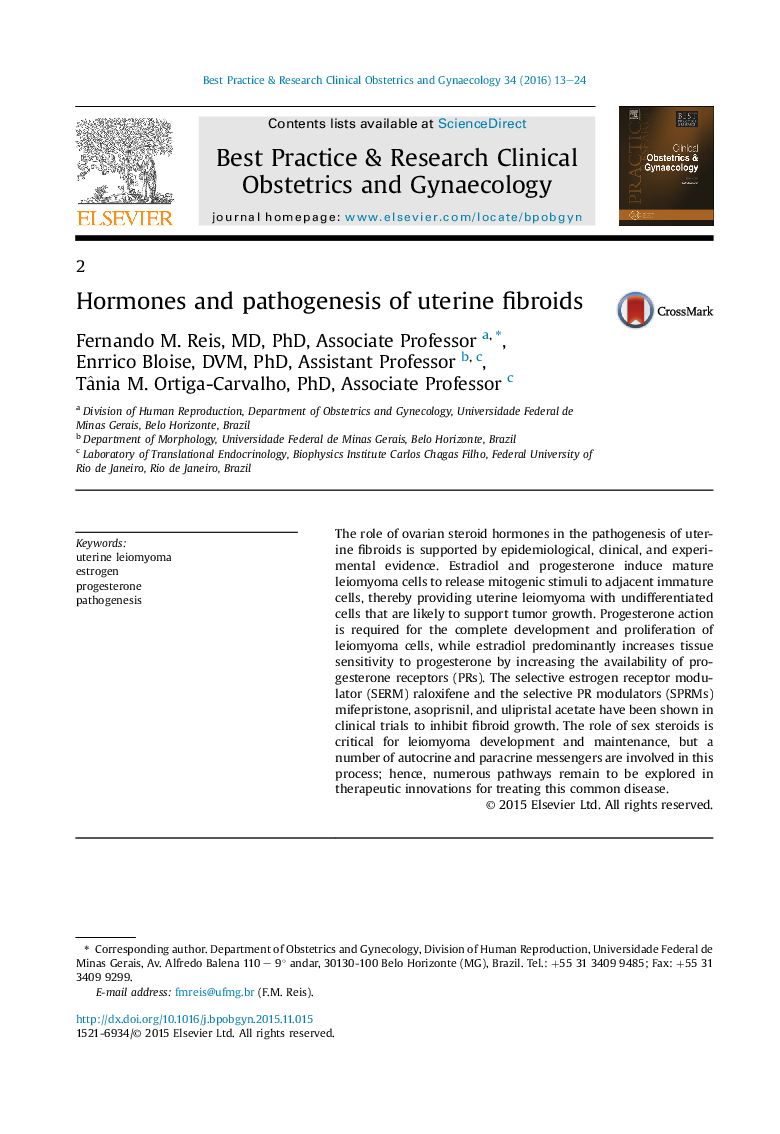| Article ID | Journal | Published Year | Pages | File Type |
|---|---|---|---|---|
| 6169077 | Best Practice & Research Clinical Obstetrics & Gynaecology | 2016 | 12 Pages |
â¢Both estradiol and progesterone are essential for uterine fibroid development.â¢Ovarian blockade arrests leiomyoma growth, but it has many side effects.â¢Autocrine and paracrine factors are induced by sex steroids in fibroid cells.â¢Leiomyomas may be more responsive to sex steroids than normal myometrium.â¢Future research should map specific pathways of hormone action in fibroids.
The role of ovarian steroid hormones in the pathogenesis of uterine fibroids is supported by epidemiological, clinical, and experimental evidence. Estradiol and progesterone induce mature leiomyoma cells to release mitogenic stimuli to adjacent immature cells, thereby providing uterine leiomyoma with undifferentiated cells that are likely to support tumor growth. Progesterone action is required for the complete development and proliferation of leiomyoma cells, while estradiol predominantly increases tissue sensitivity to progesterone by increasing the availability of progesterone receptors (PRs). The selective estrogen receptor modulator (SERM) raloxifene and the selective PR modulators (SPRMs) mifepristone, asoprisnil, and ulipristal acetate have been shown in clinical trials to inhibit fibroid growth. The role of sex steroids is critical for leiomyoma development and maintenance, but a number of autocrine and paracrine messengers are involved in this process; hence, numerous pathways remain to be explored in therapeutic innovations for treating this common disease.
